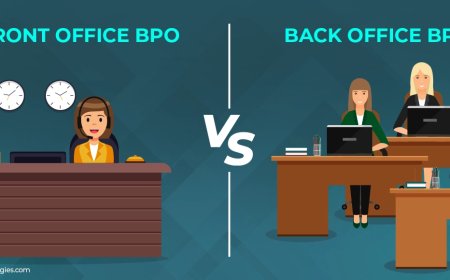How to Respond to Negative Feedback Email Without Losing Credibility
Learn how to respond to negative feedback emails with professionalism. Detailed strategies, examples, and templates to turn criticism into a growth opportunity.

Every professional, business owner, and customer-facing team will face it eventually: the dreaded negative feedback email. It might land in your inbox unexpectedly, worded bluntly, perhaps even unfairly. Whether it's from a dissatisfied customer, a critical client, or a frustrated colleague, how you respond to that message will determine far more than the feedback itself.
Responding poorly can damage your reputation. But responding thoughtfully? That can build trust, retain clients, and even turn your critic into your biggest advocate.
This guide offers a strategic, professional approach to one of the most challenging communication tasks: how to respond to a negative feedback email in a way thats productive, respectful, and reputation-enhancing.
Why Negative Feedback is More Valuable Than It Seems
Negative feedback often gets a bad reputation. No one enjoys criticism, especially when it's pointed and public. But if you look closer, you'll see it as one of the most valuable sources of insight and growth.
Heres why:
-
It reveals weaknesses in your systems, service, or communication.
-
It shows people care. A customer who takes the time to write a detailed complaint hasn't given up on youyet.
-
It offers a second chance to resolve dissatisfaction and potentially retain business.
-
It humanizes your brand when you respond with professionalism and accountability.
When handled well, even harsh feedback becomes a foundation for trust.
The Cost of Mishandling Negative Feedback Emails
Responding to negative feedback with defensiveness or indifference can cause far-reaching damage:
-
Customer churn: Unaddressed concerns often lead to lost business.
-
Poor public perception: Emails may be forwarded, screenshotted, or shared.
-
Reduced team morale: If internal feedback is ignored or dismissed, your culture suffers.
-
Missed improvement opportunities: Negative feedback often pinpoints issues that need attention.
The key takeaway: The email itself is not the issue. The way you handle it is.
A Professional 6-Step Framework to Responding
Use this framework to structure your response to any negative feedback email. It balances empathy with professionalism and accountability.
1. Acknowledge Promptly
Time matters. Waiting too long to respond sends the message that you dont care. Even if you dont have a full answer yet, acknowledge receipt of the message within 24 hours.
Example:
Thank you for taking the time to share your feedback. Ive read through your concerns and want to address them thoughtfully.
2. Validate Their Experience
Even if you dont agree with every detail, you can still acknowledge their frustration and viewpoint. This doesnt mean accepting blameit means showing empathy.
Example:
I understand how frustrating it must have been to experience that delay, especially when you were relying on our service for a critical deadline.
3. Apologize Thoughtfully
A meaningful apology isnt just sorry for the inconvenience. Its specific, sincere, and focused on what went wrong from the customers perspective.
Example:
I want to personally apologize for the delay in resolving your support ticket. You had every right to expect a faster and more helpful response.
4. Explain (Without Excusing)
Briefly clarify what happened. Avoid defensiveness, finger-pointing, or excessive detail. Your explanation should aim to inform, not justify.
Example:
After reviewing the situation, it appears there was a gap in our internal communication during the hand-off between teams. That breakdown delayed our response to your issue.
5. Offer a Concrete Solution
Offer a resolution that either corrects the issue, prevents it from happening again, or shows goodwill (like a refund or follow-up service). Be specific and take initiative.
Example:
Weve already expedited the corrected product and you should receive it within the next two business days. Weve also updated our process to ensure this doesnt happen again.
6. Close with Reassurance
End on a constructive note. Reaffirm your commitment to quality and openness, and leave the door open for future communication.
Example:
Your feedback is extremely valuable to us. Were grateful you brought this to our attention, and we remain committed to improving based on your experience.
Examples of Effective Negative Feedback Email Responses
Here are two real-world scenarios that demonstrate how to apply this framework in practice.
Example 1: Delay in Delivering a Client Project
Client Email Excerpt:
Im disappointed the project was delivered two days late. This delay caused scheduling issues on my end.
Response:
Subject: Follow-Up on Your Project Timeline
Hi [Client Name],
Thank you for your message. I completely understand the frustration this delay caused, and I sincerely apologize for not meeting the agreed deadline.
After reviewing the project workflow, I discovered an unexpected backlog during the design review phase, which wasnt flagged in time. Weve already adjusted our internal timelines and set up automatic alerts for bottlenecks to prevent this from happening again.
As a gesture of goodwill, weve applied a 15% credit to your next invoice. More importantly, weve rescheduled your next deliverable with priority status.
Thank you again for your continued partnership. Please dont hesitate to reach out with any further concerns.
Best regards,
[Your Name]
Example 2: Poor Customer Service Interaction
Customer Email Excerpt:
The representative I spoke with was unprofessional and did not help resolve my issue. Im considering canceling my subscription.
Response:
Subject: Were Sorry Addressing Your Experience
Hi [Customer Name],
Im very sorry to hear about your recent experience with our support team. This is not the level of service we strive to provide, and I truly understand your frustration.
Ive reviewed the interaction and have already spoken with the team member involved. Were reinforcing service training to ensure all representatives respond with clarity, patience, and respect. Your issue has now been escalated and resolved as of this morning.
Ive also added a complimentary month to your subscription as a token of appreciation for your feedbackand for your patience while we made things right.
We value your business and hope to earn your trust back moving forward.
Warm regards,
[Your Name]
Common Mistakes to Avoid
-
Using generic or templated replies
People can sense when you're copying and pasting. Tailor every response, even if you're using a framework.
-
Over-apologizing
Excessive apologies can sound insincere or indicate lack of control. Focus on solutions.
-
Failing to follow up
If you promise a fix, close the loop. Confirm when its done.
-
Blaming others
Avoid phrases like That wasnt our department or Thats not under my control. Own the customers experience regardless of the internal cause.
-
Taking it personally
Negative feedback is rarely personal. Detach your ego and focus on the outcome.
Final Thoughts:
Knowing how to respond to negative feedback email isn't just a customer service tacticit's a leadership skill. It reflects your values, your accountability, and your ability to remain composed under pressure.
Handled well, a negative email can:
-
Strengthen relationships
-
Build loyalty
-
Identify real improvement opportunities
-
Showcase your professionalism
Instead of fearing criticism, embrace it. A client or customer who complains is still engaged. Theyre giving you the opportunity to improveand to prove you care.
The most respected professionals and businesses are not the ones that avoid mistakes. Theyre the ones who respond with integrity when mistakes happen.







































